Reviewing first-generation Apple products is one of the hardest things a journalist can do, and the Apple Watch is a perfect illustration of why.
You look at the specs, and the price, and what it does, and you end up giving it a mediocre review, because on the face of it competing products offer more. Apple promptly sells millions of them, sets the agenda for the rest of the tech industry, and you end up looking like an idiot for missing what looks – with perfect hindsight – obvious.
Just as the iPad wasn't the first tablet, the Apple Watch isn't the first smartwatch by a long way. And just like the iPad, I think it's going to set the direction for everyone else, and sell millions of units.
I looked at the 38mm “Space Grey” Apple Watch Sport, which is the cheapest version available yet still costs a premium price of A$349.
You can pay a lot more for an Apple Watch: choose the larger 42mm version of the Sport and you'll pay $399.
Go up a level to the steel Apple Watch, and it will cost you from $549 (and up, depending on your strap). If you're rich enough to even consider the Apple Watch Edition, you probably won't care that it costs from $10,000 to $12,000.

Hardware and design
Whatever price you pay, you're going to get mostly the same Watch. The only differences are the materials used for the case and the screen.
The Sport uses anodised aluminium for the case, and scratch-resistant glass for the screen. The next models up swap to hardened stainless steel and sapphire crystal. And the Edition takes things up a notch to a unique-to-Apple 18-karat gold.
As with most of Apple's products, the result of the company's attention to detail and manufacturing prowess is a product that, even with the Sport, feels like it's been put together with a lot of care.
It's the first smartwatch I've used that I'd wear not simply for its technology, but because it looks great. Putting it next to the Motorola Moto 360, for example, makes the Android Wear device look chunky and old-fashioned, despite there not being a huge amount of difference in thickness.
Design is all about details, and whether you love them or loathe them, you have to acknowledge this is something Apple has mastered.
The Apple Watch has only two physical controls. The first – a plain button – simply brings up a list of your favourite contacts, allowing you to quickly call them or send them a text (there are several Watch-specific kinds of communication, which I'll come back to shortly).
The other control is much more interesting, and ends up as the heart of how you work with the Apple Watch.
The “Digital Crown” looks and feels like a normal crown used to wind up a mechanical watch or adjust the time. On the Apple Watch, you rotate it to scroll up and down lists of content on screen; press it take you back to the watch face or app homescreen; or press and hold it to invoke Siri.
The insight behind it is simple: on a small screen, if you have to use your finger to scroll through content, you obstruct the screen. Rather than using your finger to scroll (which is an option), you should use the Digital Crown instead.
If you've used a smartwatch before, this takes some getting used to. I had to spend a couple of days reminding myself not to scroll onscreen with my finger, but once I got used to the idea the Digital Crown was incredibly useful, allowing me to see and do more on the Watch.
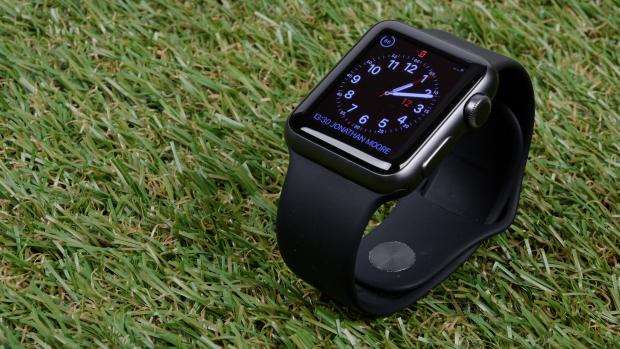
The screen itself is a high-quality AMOLED display, and perfectly readable in sunlight. Despite wearing glasses and being old enough that I need to squint occasionally when reading things, I found it perfectly comfortable.
The resolution is 272 x 340 on the 38mm model, and 312 x 390 on the 42mm, which is to say perfectly sharp at normal viewing distances.
And, like the trackpad on the new MacBook and 13in MacBook Pro, the Apple Watch screen incorporates “Force Touch”. Tap on the screen to do one thing. Tap and press harder, and it appears as if you're pressing through the screen – a weird feeling at first, but one that you very quickly get used to.
This is used in apps to show additional options, such as dismissing all your alerts.
On the back of the Watch, you'll find the sensors for checking your heart rate. Heart-rate checking is, in theory, continuous. In practice, in order to save power, the Watch only checks your heart rate every few minutes unless you're explicitly exercising.
I compared the Watch's heart-rate claims by checking my pulse manually, and found they were accurate to within a handful of beats per minute.
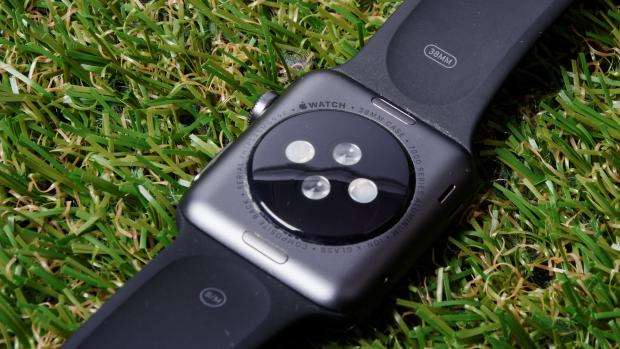
Setting up the Apple Watch is one of those experiences only Apple could create. There's no fiddling with Bluetooth pairing. Once it starts up, the new Apple Watch shows an animation on its screen and you simply point your phone's camera at it. It then pairs for you; you never have to do anything else.
Faces and "Complications"
Creating the user interface for a tiny screen you wear on your wrist will always be a major challenge. If you want to make something that works on a small screen, there's no point in replicating what you have on a smartphone. If you do that, you'll create something that delivers a poor experience.
At the heart of the Apple Watch, as the name suggests, is the watch face itself – and as you might expect, Apple's design team has really done an excellent job. Every face is a thing of beauty.
There are classic utility faces, modern-looking faces, and faces that are more abstract. There's even a rendition of the classic Mickey Mouse face, complete with Mickey tapping his foot every second.
Most of the watch faces can be customised with what Apple calls "Complications". On traditional watches, a complication is anything that “complicates” the watch face, including elements such as timers, dates and so on.
On the Apple Watch, Complications are customisable, and you can choose which Complication to show in any of the available “slots” on the watch face.

Although you can change Complications (along with some other features, such as the number of numbers shown on a rotary-dial-style face and the colour of elements such as the hands), you can't create your own from scratch.
At present, you're limited to customising what Apple provides. Even developers are forbidden, at this point, from producing new watch faces.
I think there are good technical reasons for this. Looking at Apple's faces, it's apparent that one of the design goals is to maximise the amount of black on screen, and minimise the number of coloured pixels.
Because the display is an AMOLED one, where black pixels draw no power, it's safe to assume Apple's black-led face designs are primarily there to avoid power drain.
Of course, if you're coming from the free-for-all world of Android Wear, not being able to have a custom watch face that represents your personality will be frustrating, although the history of Apple (and in particular the iPhone) suggests Apple will ultimately allow more freedom to developers.
However, I think this is a sensible trade-off. Battery life is something that's clearly a very high priority for Apple, and also its customers.
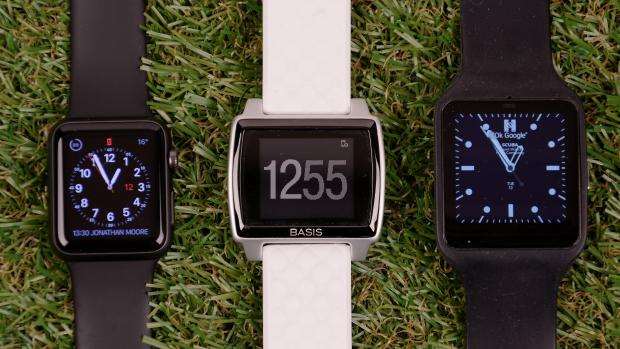
Next: What about the apps?
Apple Watch apps
All apps are accessed through the homescreen, which is accessed by pressing the Digital Crown. The homescreen itself surprised me: I was expecting to have problems hitting the round icons for each app as you scroll around, but Apple has carefully optimised the touch targets so that, over a couple of weeks of use, I didn't hit a single wrong button. On a 38mm screen, that's pretty impressive.
The built-in apps on the Apple Watch are something of a mixed bag, and feel very much like “0.9” releases. Some, such as the Messages app, feel more complete, and have some nice Watch-specific features in them.
Others, such as Mail, feel almost like Apple didn't quite have enough time to work out what it wanted to do.
Most are fairly basic. Weather, for example, delivers pretty much the same information you get on an iPhone, but tailored to the smaller screen.
They usually carry over customised information from the iPhone, too: for example, Weather will display forecasts for all the locations you have set up as favourites on your phone.
Some of Apple's apps offer more features than others. For example, Messages is capable of using Siri for dictation so that you can initiate and reply to texts, and also lets you send little drawings, taps and even your heartbeat to other Apple Watch owners.
Email, on the other hand, can't do much at all – it's purely read-only. The Photos app is more basic still. You can view a set of your favourites, but you can't do anything with them.
If Apple's own apps are of varied quality, third-party apps are even more limited. Most app developers have had very little time with the device, and almost no experience of how users actually interact with a really small screen.
Already, some of the developers who dived into Apple Watch on day one are redesigning their applications to make them more effective.
However, developers can't currently do much about app performance. At present, very little app code runs natively on the Apple Watch. Effectively, most of the code runs on your iPhone, with the Watch displaying controls and results.
Applications that run on the Watch itself are coming “later in the year”, and you can bet June's Worldwide Developers Conference will reveal more details.
This has two implications. First, it means that, unless developers are very careful about the features they create, there'll be a lot of data flying back and forth between the iPhone and the Watch, all of which slows things down.
Tap on something and data will move from Watch to iPhone and back. Change the display and even more data will move around. This makes the experience sometimes sluggish.
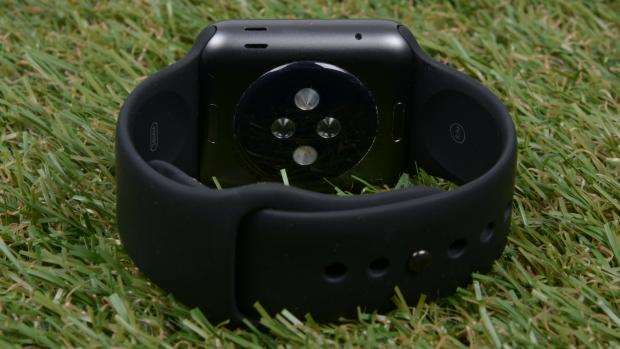
Second, it means that if your Apple Watch isn't within range of the iPhone, many apps will either not work, or work with limited functionality. The Apple Watch isn't, at this point, an independent device.
However, there's a twist to this: the Apple Watch doesn't communicate with the iPhone only via Bluetooth, but also wi-fi. This means if your Watch is out of Bluetooth range of the iPhone, as long as you're on the same wi-fi network, everything will work as normal.
If you're in a home or office where you have a single logical network, this means you can leave your iPhone on the desk and it will happily communicate with the Watch anywhere around the building.
As well as launching from the homescreen, apps can also display what Apple calls “Glances”. Swipe down from the watch face and you'll see a list of your notifications. Swipe up from the bottom and you get into Glances, which are timely or contextually relevant collections of information from your favourite apps.
For example, a Glance for a podcast app might contain only the details of the current playing podcast, plus controls for skipping forward or back. A weather app might just display the weather data for your current location.
You swipe left and right while looking at Glances to get to the next or previous favourite Glance. Effectively, Glances are a fast way of getting to core information and features of an application. You're limited to 20 active Glances on your Apple Watch – given that you have to swipe between them, this is probably a sensible limit.
Next: Fitness
Fitness
Apple has strongly promoted the Apple Watch as a device for fitness. It includes two applications dedicated to fitness: Activity and Workout.
Activity is designed to get you more active throughout the day, by setting a movement goal (expressed as a target in calories), an exercise goal of 30 minutes per day, and a standing goal to encourage you to stand for a few minutes, 12 hours per day.
It's not designed for hardcore exercise bunnies, who will be better served by third-party apps. Instead, it's designed for people like me, who simply need a bit of a nudge towards being more active.
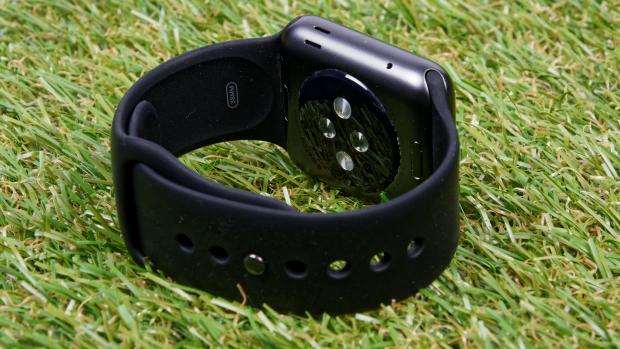
Workout is, as the name suggests, all about logging specific workouts. You can select from common types of workout such as outdoor and indoor runs or walks, elliptical trainers and rowing machines.
You set a calorie or time goal, and away you go – the Apple Watch logs what you do, and encourages you along the way by telling you when you've hit 50 percent of your goal. It's basic, but it works effectively.
All the data from the fitness apps, along with general steps taken and your heart rate, are fed into the Health app on your iPhone. This means the data also ends up available to other applications to which you've given permission on your phone.
There's also already a good selection of third-party fitness apps on the Apple Watch, from well-known brands such as Runtastic and Strava, to more specialised apps such as FitStar Yoga and Hole19 for golf.
Is the Apple Watch better than a dedicated fitness device? For everyone except the most dedicated fitness fanatic, the answer is probably yes.
It's easy to use; it tracks things in a clear and intelligible way; and it's extensible by third-party applications. The one caveat is, of course, that it needs to be in range of your iPhone to fully track your motion, as it doesn't have built-in GPS.
It tracks steps and heart rate even without the phone to hand, and it will make a guess based on previous data of the distance you've walked or run, but unless you have the iPhone with you, you can't accurately track your distance or route.
Battery life
Before its release, there was some controversy over the Apple Watch's potential battery life. The rumour was it would last only a few hours per charge in “active use”, which sounded like you were going to need to charge it multiple times per day.
The good news is that in real-world use – backed up by our smartwatch battery tests – you should see around a full day and a half of use before the device runs out. On average I found it had around 30-40 percent battery left at the end of each day. It's a device you'll want to charge overnight, using the inductive charger supplied.
It's worth noting these battery figures are for the 38mm Apple Watch, which has a 205mAh battery. The 42mm version, which we haven't had the opportunity to test yet, is likely to last longer, thanks to its bigger battery.

Conclusions
Given the company's track record, it would be foolish to bet against Apple completely changing the way wearables are perceived. And, after six days of continual use, I've come to expect the Apple Watch to be on my wrist at all times.
The true test of any personal device is simply whether you miss it if it's not there, and in the case of the Apple Watch, this is definitely true.
It's also changed my behaviour. One of my biggest fears about the Apple Watch was that it would be like the Android Wear devices I've previously used – a distraction, which ended up making me look at my phone more than I previously did.
In fact, what I found was the opposite: being able to glance at notification after a soft tap on my wrist meant I didn't look so much at the phone. I didn't need to – I was able to triage notifications from the wrist, usually with just a tap.
Is it the best smartwatch available at present? If you have an iPhone, the answer is a clear “yes”. It's not cheap, but you're paying for a high-quality product that integrates incredibly well with the whole Apple ecosystem.
Certainly, Apple Watch is a more complete product than the first iPhone was. It's ahead of Android Wear in pretty much everything that matters, apart from three things: watch faces, support for Android and the choice of different watches.
However, if all the multiple watches available are worse than the Apple Watch – and I think they are – then the choice is unimportant.
The Pebble Steel and forthcoming Pebble Time are stronger rivals for your cash, with superior battery life to anything else on the market and effective notifications systems, but they lack the design finesse of Apple's digital timepiece and its fitness-tracking features.
At the moment, however, the Apple Watch is really “just” an accessory to the iPhone, albeit a beautiful and really interesting one.
Should you buy one? If you have an iPhone and have the money, you won't regret it. But how much use you'll get out of it remains to be seen.





_(11).jpg&h=142&w=230&c=1&s=1)




.jpg&w=100&c=1&s=0)
_(8).jpg&w=100&c=1&s=0)









.jpg&q=95&h=298&w=480&c=1&s=1)


